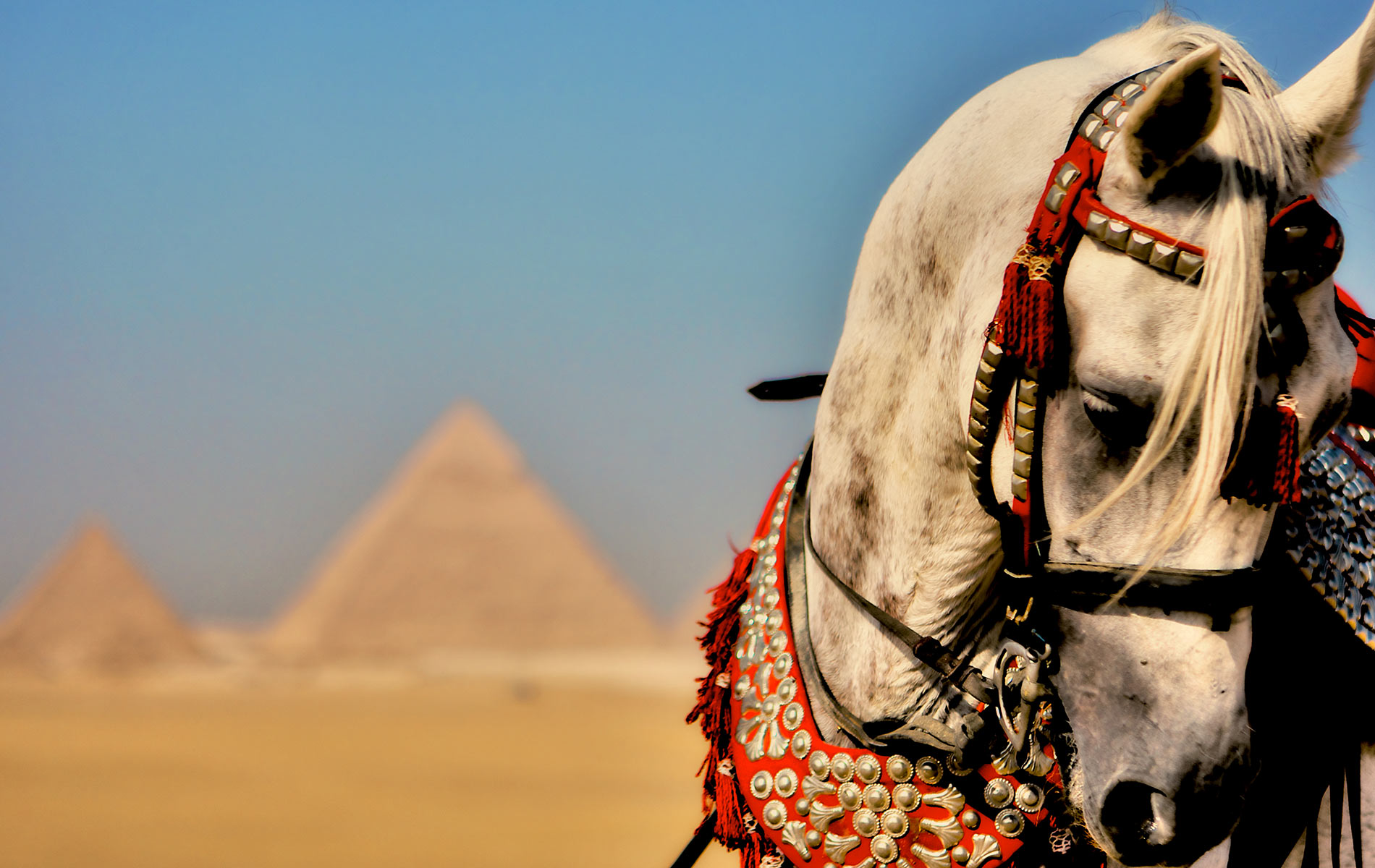
vie-magazine-egypt
Adventures in Egypt
Story & photography By Romona Robbins
Last fall, I shared the journey of a lifetime with my husband, Shane. The Travel Channel sent us on a two-month assignment to Africa: Morocco, Tunisia, South Africa, Tanzania and Egypt. Each country presented its own unique charms and unforgettable experiences, but Egypt was our favorite. Egypt is known for its mysticism—and its turmoil. Despite its allure, I certainly had my reservations about going. “Be careful!” were the words that I heard repeatedly. Eventually, however, I realized that the warning merely demonstrated a fear of the unknown.
Upon our arrival in Cairo, we experienced excruciating difficulties in customs. We met our driver, Muhammed, and our host, Teymour (Tim), a worldly Egyptian whose Canadian accent was mixed with a surfer drawl that he had acquired during a few years in Hawaii. We headed to the five-star Holiday Inn—complete with an executive lounge and bomb detectors. It was a bit unnerving, but having just set foot in a different world, I appreciated the excessive security—enough to enjoy a good night’s rest before beginning our first day of filming.
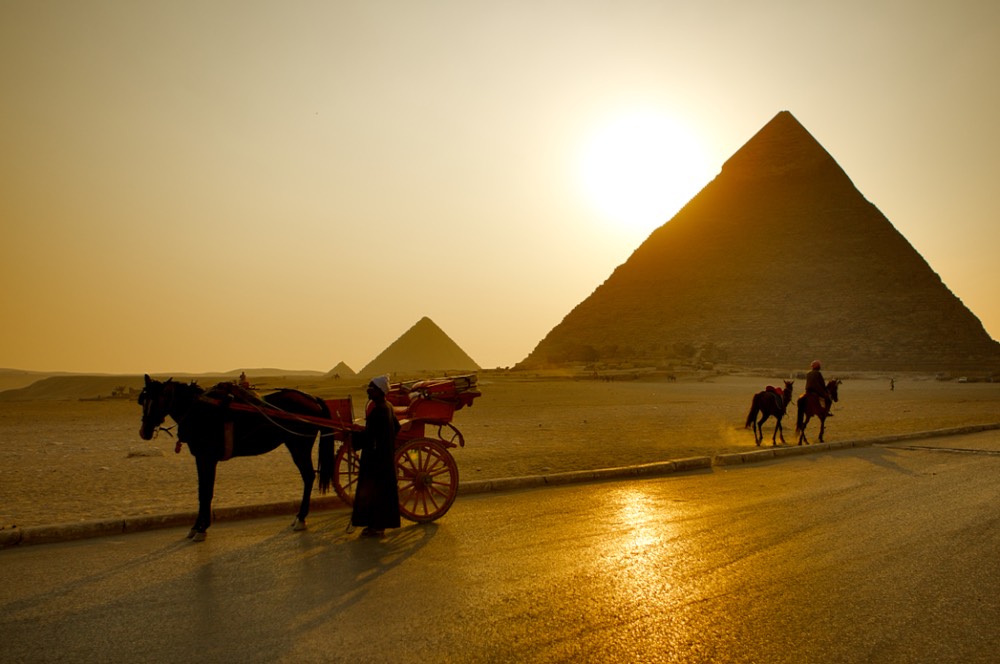
When visiting Cairo, seeing the pyramids is as much a given as seeing the Eiffel Tower when in Paris.
Location One: Cairo
In Cairo’s Egyptian Museum, we found ourselves overwhelmed yet captivated by its staggering size and numerous exhibits. In fact, it has so many artifacts that only a fraction of them are shown to the public, while the rest are safely stowed away. Excessive museum fees and a tight budget allowed us only one hour to film—a tenth of the time that we should have spent there. We quickly raced to all of the key exhibits while squeezing our way through droves of tourists. This would set the frantic tone for the remainder of the adventure that lay before us.
Our next stop was the Great Pyramids of Giza. When visiting Cairo, seeing the pyramids is as much a given as seeing the Eiffel Tower when in Paris. Observing these splendid structures from atop an Arabian horse was even more impressive! We mounted steeds from a family-owned business, N & B Stables, located just outside the pyramid complex. Apart from the distractions of the tourists, vendors, restorations and Cairo’s cityscape, these mausoleums of the great pharaohs and the iconic Sphinx were nothing short of mesmerizing.
[double_column_left][/double_column_left] [double_column_right]When visiting Cairo, seeing the pyramids is as much a given as seeing the Eiffel Tower when in Paris.
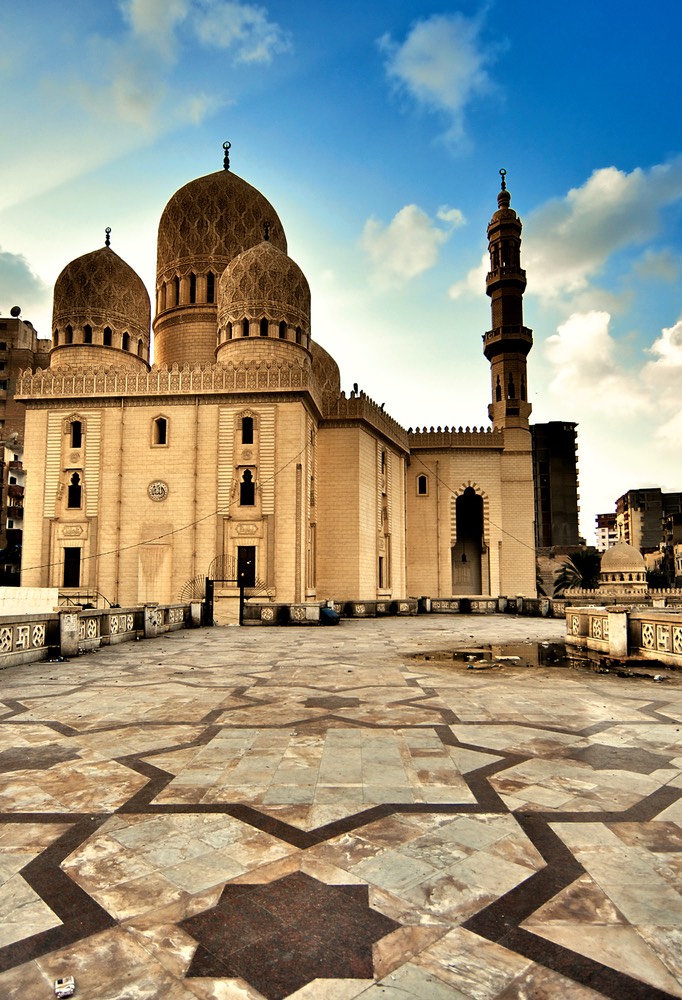
In 1796, Algerians completed the truly spectacular structure that was built over the tomb of the Andalusian Saint, Abu’l ‘Abbas.
Next, we raced to the Nile River for a sunset dinner on a felucca (pronounced “fluka”), a small sailboat that has changed little since its inception thousands of years ago. We enjoyed minced lamb served with fresh cucumbers, tomatoes, locally produced feta cheese and ta’amiyya (falafel). If you ever visit Egypt, a felucca experience is a must. This quaint and charming vessel creates a romantic cruise on the Nile that is well worth your time—as long as you trust the captain. Our captain narrowly avoided crashing our boat into another felucca. As the night ended, we returned to our room to prepare for the next day. Because Egypt is one of the oldest civilizations in the world, Cairo certainly offers much to see and do, but we hadn’t seen anything yet!
Location Two: Alexandria
The oldest port in the world, Alexandria is Egypt’s window to the Mediterranean. It is practically an underwater museum; it contains epic dive sites like the Pharos Lighthouse (the world’s first lighthouse), Cleopatra’s Palace and the sunken city lying just below its harbor surface. This ancient world, still awaiting discovery, is a history buff’s wonderland. As we prepared for a dive, our tanks were charged, but our luck was not. At the last minute, President Mubarak declared the sea completely off-limits to divers due to heightened security. What a huge disappointment!
Although most of Alexandria’s ancient history was hidden under the water, there was still plenty to see above. Plan B began with a trip to the Bibliotheca Alexandrina, which was resurrected in 2003, near the site of the original library that had been built by Alexander the Great in 3 BC. The contemporary version of this massive building was a wonder to behold—especially since the design doesn’t quite fit into its historical surroundings. Its planetarium, virtually a floating ball, and the floating seminar rooms were dumbfounding.
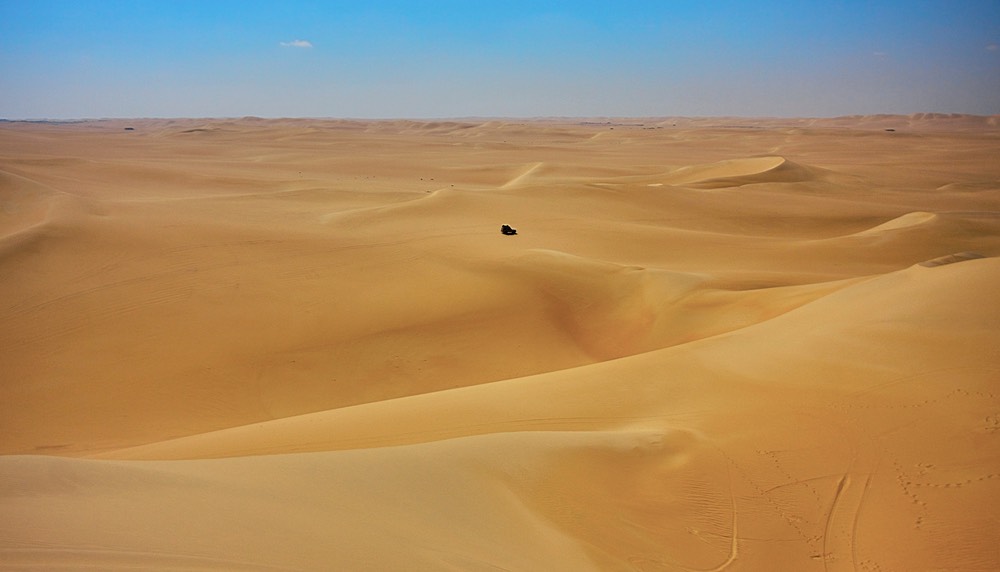
Our convoy pushed into the shifting hills of sand, leaving civilization in our wake.
After a quick stop at the 15th century Qaitbey Fort, where Alexandria’s ancient lighthouse once stood, we made our way to Abu el-Abbas el-Mursi Mosque (Abu’l ’Abbas). In 1796, Algerians completed this truly spectacular structure that was built over the tomb of the Andalusian saint, Abu’l ‘Abbas. At the entrance, a young child collected a small gratuity in exchange for guarding our shoes and belongings. Being a woman, I was only permitted in the tiny women’s prayer room while Shane filmed the larger and more elaborate men’s section. I marveled at the intricately carved teak, the beautiful engravings of Kufic Arabic script atop Egyptian granite columns, the Italian marble and the thick, hand-woven red carpets that covered the floor.
As the second day waned, we checked into the Adham Hotel, which resembled a diver’s adventure compound. The rooms offered all the comforts of home: a kitchen, a bath (with hot water!) and a lovely view of Alexandria’s skyline. It was the perfect place to gather supplies and to meet the new crew members who were joining us for the remainder of our journey: an Egyptologist, a doctor, a retired colonel who owns Zarzora Expedition, Cairo’s chief of police, a dive master, the proprietor of Sahara Adventure Company and drivers—six trucks for sixteen people; all this for our next location.
Location Three: The Sahara
The following morning, we eagerly began our trek into the majestic and golden dunes of the Sahara, the Great Sea of Sand. As the largest and oldest desert in the world, the Sahara’s vastness emanates an enigmatic impression. Our convoy pushed into the sifting hills of sand, leaving civilization in our wake. There were no buildings, no roads and no other people to share our space. Worry turned into excited apprehension as a new sense of freedom came over me. I was “bitten by the desert bug,” as Colonel Mestakawi (a.k.a. “Desert Fox”) would suggest. Only a month before, a group of Italian tourists and their guides had been kidnapped by pirates while travelling in the Sahara; but we couldn’t feel any safer being with our knowledgeable companions. Desert Fox, for instance, is one of a few in the world who can actually navigate through the desert without the assistance of GPS. He relies solely on the moon, the stars and the wind to find his way.
As the sun set into the undulant horizon of dunes, we established a surprisingly comfortable campsite that contained a lounge/dining area with a makeshift kitchen, cozy tents with cots, a shower and a toilet (which we did not use because it was easier, cleaner and more private to stroll off into the distance). For dinner, the drivers prepared grilled camel meat, bamia (beef and okra casserole), fresh fruit and mint tea. We enjoyed our meal and warmed our bare feet in the sand as we all got to know each other under a blanket of stars.
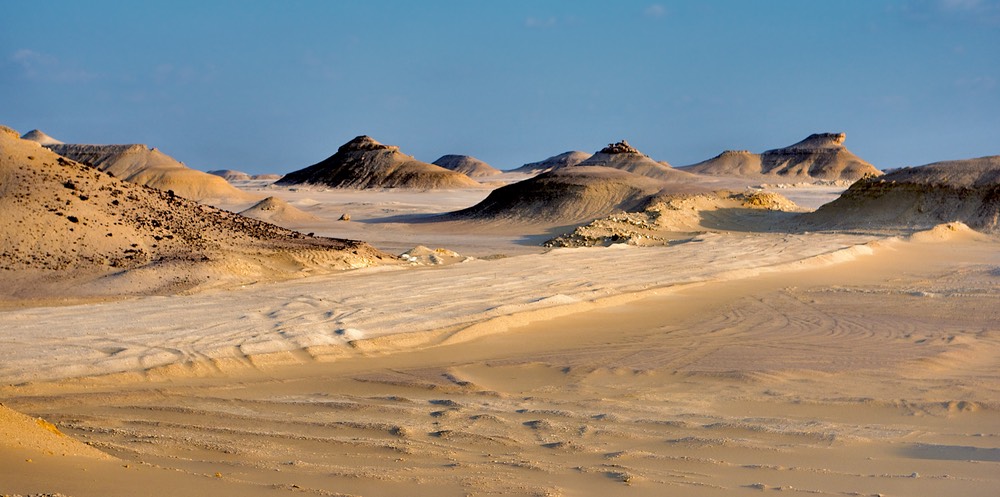
Afterwards, Az, a newly certified doctor, invited us to help him fly his giant kite. We cracked some glow sticks, inserted them into the torn areas of the kite and launched it into the night sky. The Sahara was so quiet that all we could hear was a symphony composed of the whistle of wind, the movement of sand and the zip of the kite as it cut into the night sky above us. We watched the green tracers from the glow sticks zigzag in the darkness of a new moon. It was a little breezy that night and the temperature was about sixty-five degrees. The Sahara can offer the harshest of climates, but since it was the beginning of October, the weather was bearable and the area was almost completely devoid of bugs—quite a perfect camping scenario.
Every day in the Sea of Sand was an adventure. Our guide, Tim Adham from Sahara Adventure Company, had brought an impressive assortment of toys, so we took advantage of our natural surroundings. We filmed some extreme sports like sandboarding, kite jumping and wheeling down dunes as high as 400 feet. Descending a massive hill of sand was far more exciting than any roller coaster ride. Typically, it took full throttle to reach the peaks without getting stuck, and if we wanted to make it down the other side, we could not slow down. Flying over a cliff into oblivion was an exercise in luck and trust; I needed to have tremendous faith in our driver.
Scuba diving in a place called the Sea of Sand may sound like an oxymoron, but people often forget that there is water to be found. Our first oasis was an isolated town called Siwa Oasis, located in the middle of this seemingly barren land. Siwa is best known for its Temple of Amun (a.k.a. Temple of the Oracle), and it is where Alexander the Great had ordained himself as a god and as the ruler of Egypt. Despite its surroundings, Siwa is a town blessed by the heavens, and maintains a wealth of history that dates back to Paleolithic times. It has approximately 230 fresh springs that are fed by a natural aquifer, providing for an abundance of flora and fauna. Diving in one of its spring-fed wells, Abu Shrouf, was our primary reason for stopping here.
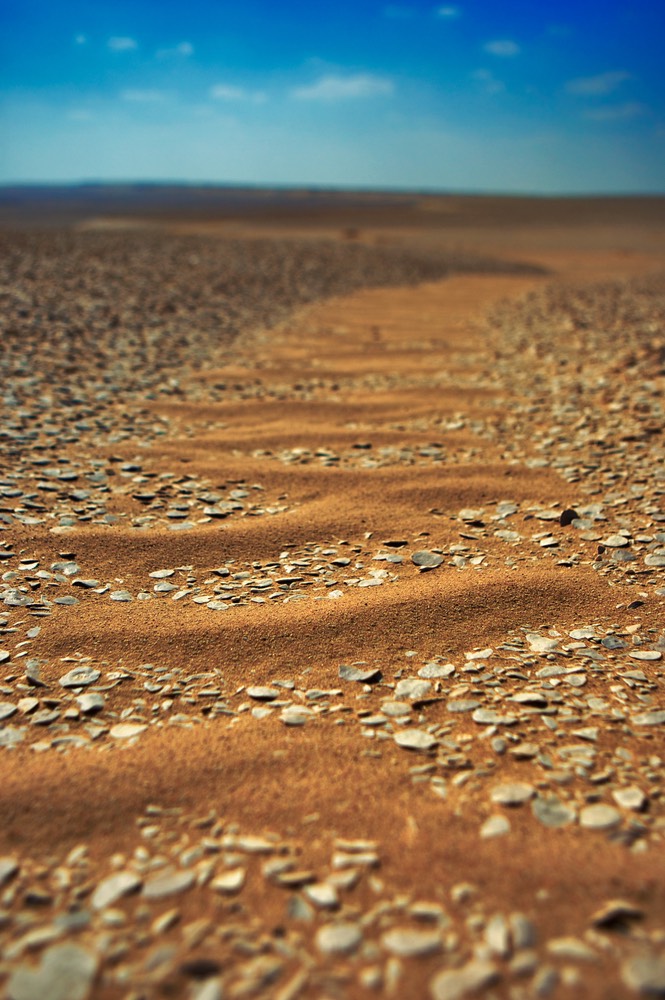
Gilf Kebir
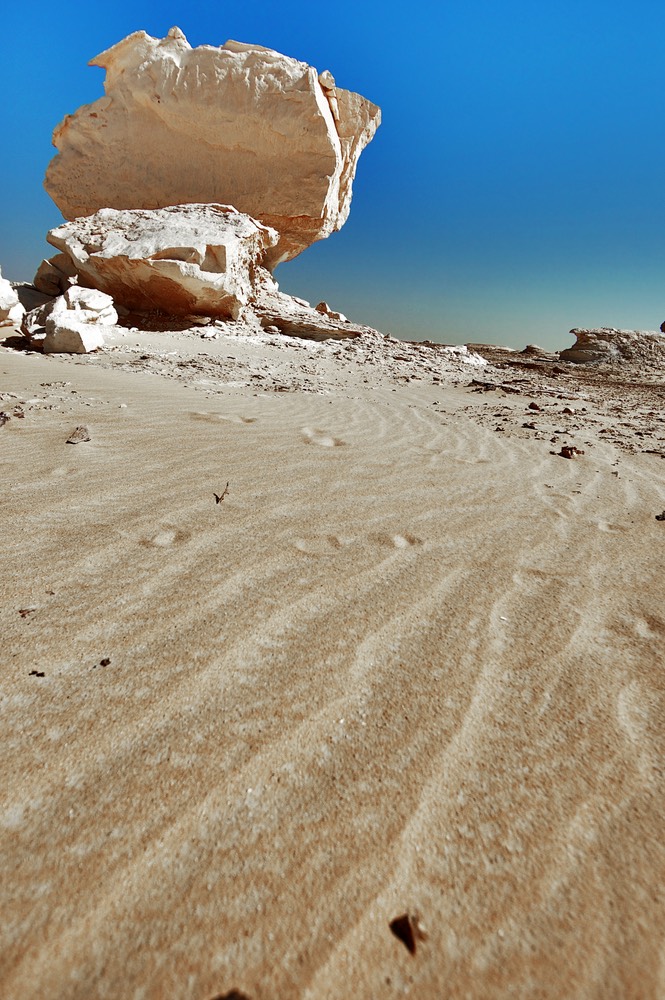
The White Desert
Diving in the Sahara isn’t allowed unless the right person can pull some strings—and Tim was just that person. Abu Shrouf is a large spring surrounded by date palms and is about thirty feet deep. The Egyptian Ministry of Antiquities protects this area because 2000-year-old Roman ruins rest at the bottom of the well. The water was cool, blue and inviting, but a few kicks of the feet made it somewhat murky with debris. The fish, which resemble common aquarium fish, are indigenous to the well. Selfishly, I was more excited about bathing than anything else since this was the third day of our desert excursion, and the shower at the camp was not worth the trouble. Naturally, once we entered the water and began to document the unique experience on camera, I was filled with awe over what we were actually doing. I fell in love with this desert even more. I was sad to leave, but it was time to make our way back into civilization.
In one day, we traversed the Gilf Kebir, the Black Desert near the Baharia Oases and the White Desert on a two-lane road that led us straight to Luxor. Each desert that we passed through had distinct characteristics. Gilf Kebir is one of the largest plateaus in the world. This vast arid land was once the Tethys Sea and teamed with marine life; it is now barren and filled with fossilized bivalves. The Black Desert has chains of black volcanic hills, which gave us the impression that we were traveling on Mars. The White Desert is filled with chalk rock formations uniquely shaped by wind. It was disappointing that we spent such little time at each of these locations, but that was both the beauty and the curse of our adventure. After all, we still had two more locations to cover.
Location Four: Luxor
On our way to Luxor, we ran into the first of many military checkpoints. Armed soldiers hovered over Tim for almost two hours. But he had everything under control. After a seemingly endless interrogation, Tim raced back to the convoy. Excitedly, he ordered, “Get in the car! Go! LET’S GO!” We were not running from the law; Tim simply did not want to give them a chance to change their minds. Later, he explained that only Egyptian citizens are allowed private convoys and that all others must travel in scheduled convoys with police escort. Egypt goes to great lengths to protect their tourists because tourism is a major industry for them. Ultimately, the constant checkpoints were a nuisance, transforming what should have been a ten-hour drive into a seventeen-hour ordeal. By the time we arrived in Luxor, we were unbelievably exhausted, but a hot shower and hotel bed fixed everything.
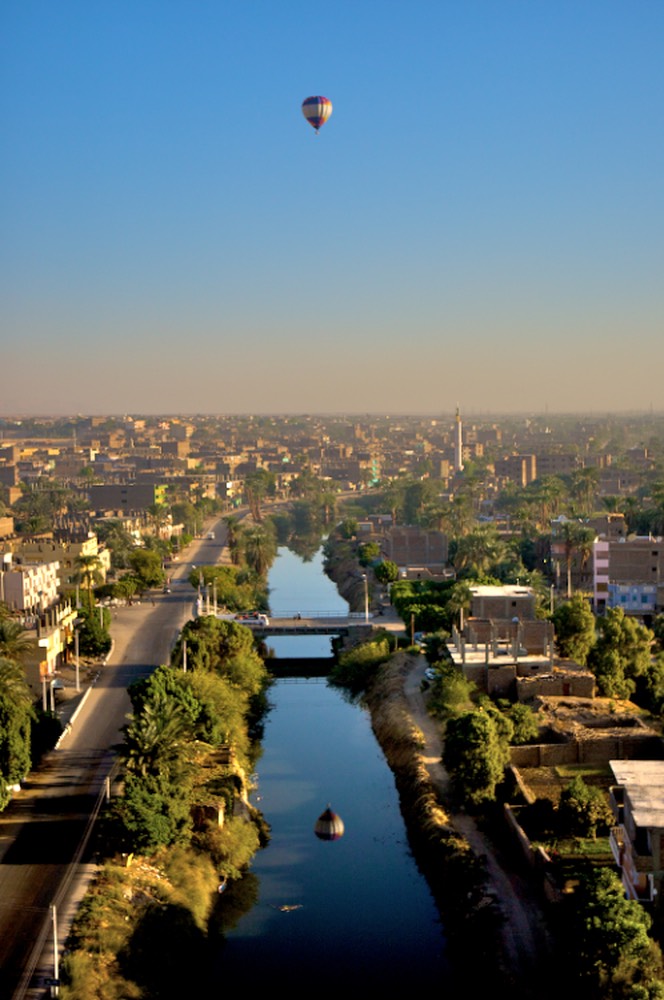
Since we only had one day to do it, the best way for us to see Luxor was from the air.
Since we only had one day to do it, the best way for us to see Luxor was from the air. At dawn, we hitched a ride on one of many hot air balloons that filled the morning sky. It was unsettling to share a balloon basket with thirty or more passengers, but I soon found myself absorbed by a bird’s-eye view of the Valley of the Kings, Karnak and the Nile River. Descending from this “open-air museum” to investigate the Karnak Temple from the ground was an even more impressive experience. Standing next to the enormous columns of the Great Hypostyle Hall was mind-boggling, as was traversing the Valley of the Kings. More than sixty tombs are carved into cliffs of mostly limestone and sedimentary rock. Each tomb is decorated with colorful hieroglyphs and paintings of Egyptian mythology, but most have been stripped of their treasures. Our time in Luxor was brief, but even our small glimpse of its rich history was remarkable. After the cities and deserts of Egypt, we were ready to quench our spirits and journey to our final location.
Location Five: Hurghada and the Red Sea
Right off the bat, Hurghada reminded me of an Egyptian version of Panama City Beach But the condominiums, hotels, tourist beach shops and restaurants weren’t what we had come for—the turquoise water of the Red Sea was. The Red Sea is home to an abundance of marine life that typically found in larger oceans; combining this with the warm water, great visibility and minimal currents, it is regarded as a world-class dive.
To take full advantage of the sun, our first dives were shallow, allowing the rays of light to accentuate all the vibrant colors of the coral and fish. After sunset, we jumped into the water again for our final dive. Our dive master insisted that I leave my camera behind because I was a bit apprehensive about sharks and because it was my first night dive. I did not listen, but I should have. I grew a little antsy as we descended into the darkness with our flashlights. I could not see past a tiny beam of light, which was quite frightening. I fidgeted with my camera to calm myself, and I tried to take pictures of everything that our dive master pointed out. Suddenly, I sensed that something was following me. I clung desperately to the dive master while trying to see what it was—a family of gigantic poisonous lionfish. They were using our lights to pick off an easy dinner. These fish are not usually a problem for divers, but at that moment, they took temporary precedence over my fear of sharks. My adrenaline was high and I was practically hyperventilating. Not surprising, I was the first to consume all of my O2. I was forced to ascend immediately, which of course ruined the dive for everyone else. As awful as this experience may sound, I still enjoyed it and would do it again—but without the camera.
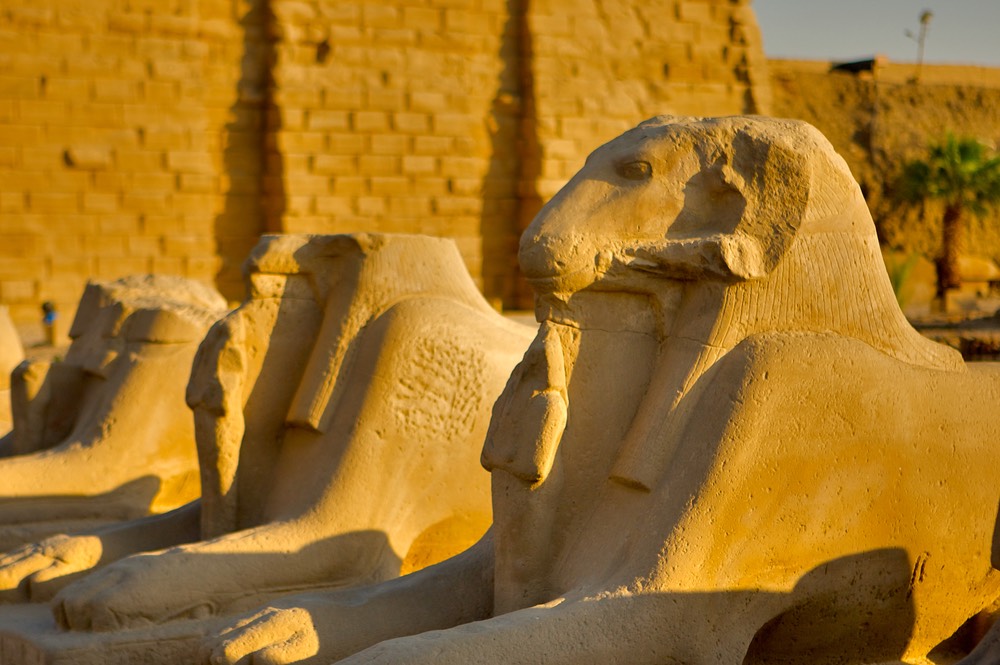
Ram Head Sphinx of Karnak
On the way back to the Cairo airport, I thought about all that we had done. We had crammed a month’s worth of activities into the ten most amazing days of our lives, and we had only scratched the surface of what Egypt truly has to offer. From the monuments that we had only heard of as kids, to the treasures that we had never known existed, Egypt inspired a sense of adventure that we had no longer thought was possible. So, now, when I think of those words “be careful” regarding Egypt, it’s not because it’s dangerous… it’s because you’ll want to go back for more.
— V —
Share This Story!
KEEP UP WITH THE LATEST STORIES FROM VIE

































































































































